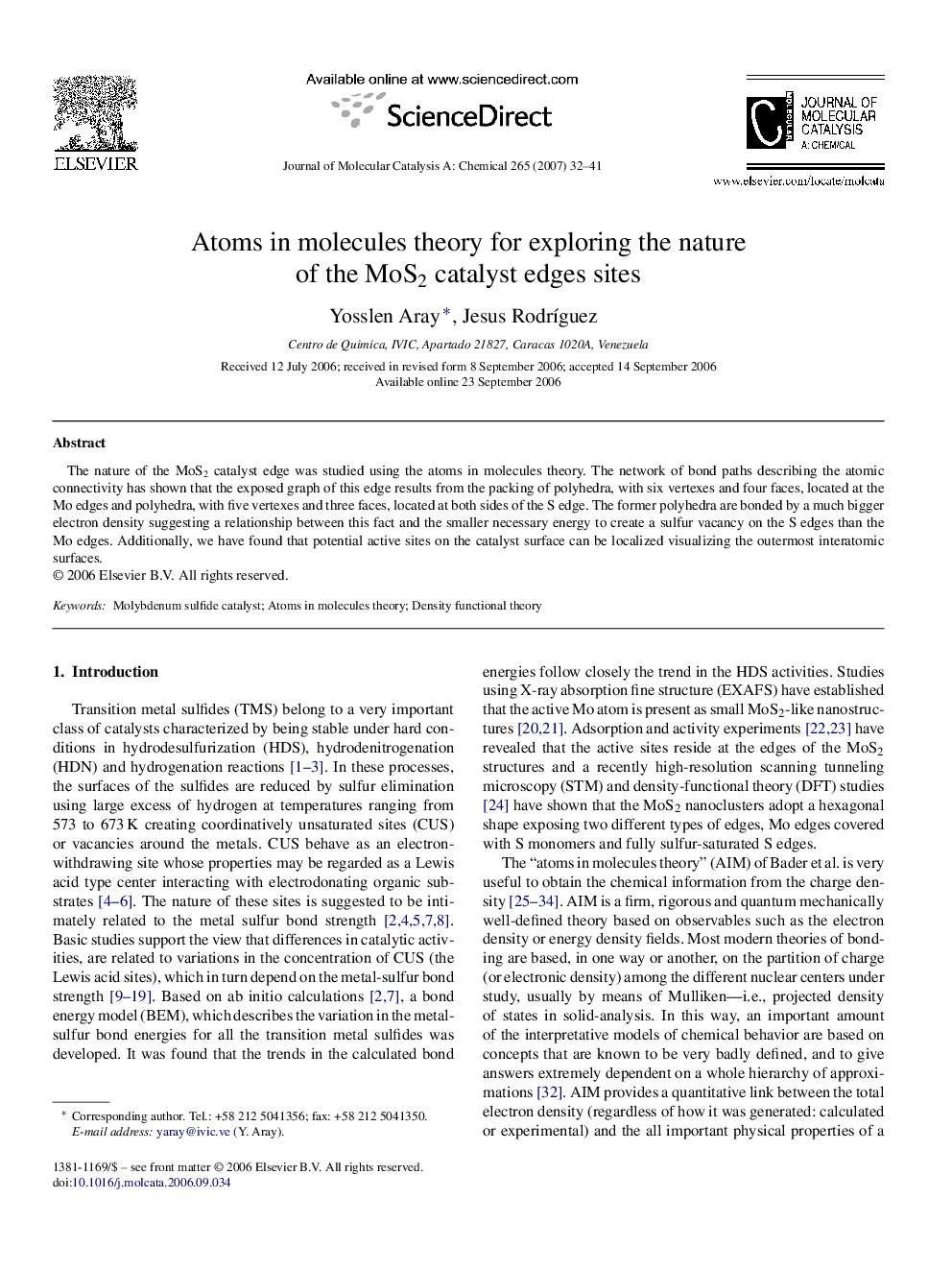| کد مقاله | کد نشریه | سال انتشار | مقاله انگلیسی | نسخه تمام متن |
|---|---|---|---|---|
| 68087 | 48503 | 2007 | 10 صفحه PDF | دانلود رایگان |

The nature of the MoS2 catalyst edge was studied using the atoms in molecules theory. The network of bond paths describing the atomic connectivity has shown that the exposed graph of this edge results from the packing of polyhedra, with six vertexes and four faces, located at the Mo edges and polyhedra, with five vertexes and three faces, located at both sides of the S edge. The former polyhedra are bonded by a much bigger electron density suggesting a relationship between this fact and the smaller necessary energy to create a sulfur vacancy on the S edges than the Mo edges. Additionally, we have found that potential active sites on the catalyst surface can be localized visualizing the outermost interatomic surfaces.
The nature of the MoS2 catalyst edge was studied using the atoms in molecules theory. It has found that the active sites on the catalyst surface can be localized visualizing the outermost interatomic surfaces. In this sense, the picture shows interatomic surfaces (white surfaces) defining the basin of the outermost sulfur atoms (denoted as yellow spheres) for the MoS2 edge model (left) and for the active site (right). A hole between these basins (highlighted by a white rectangle) shows the site that allows access to the Mo atoms (the Lewis sites). Gray and white spheres denote Mo–S and S–S bond critical points, respectively. Figure optionsDownload as PowerPoint slide
Journal: Journal of Molecular Catalysis A: Chemical - Volume 265, Issues 1–2, 16 March 2007, Pages 32–41